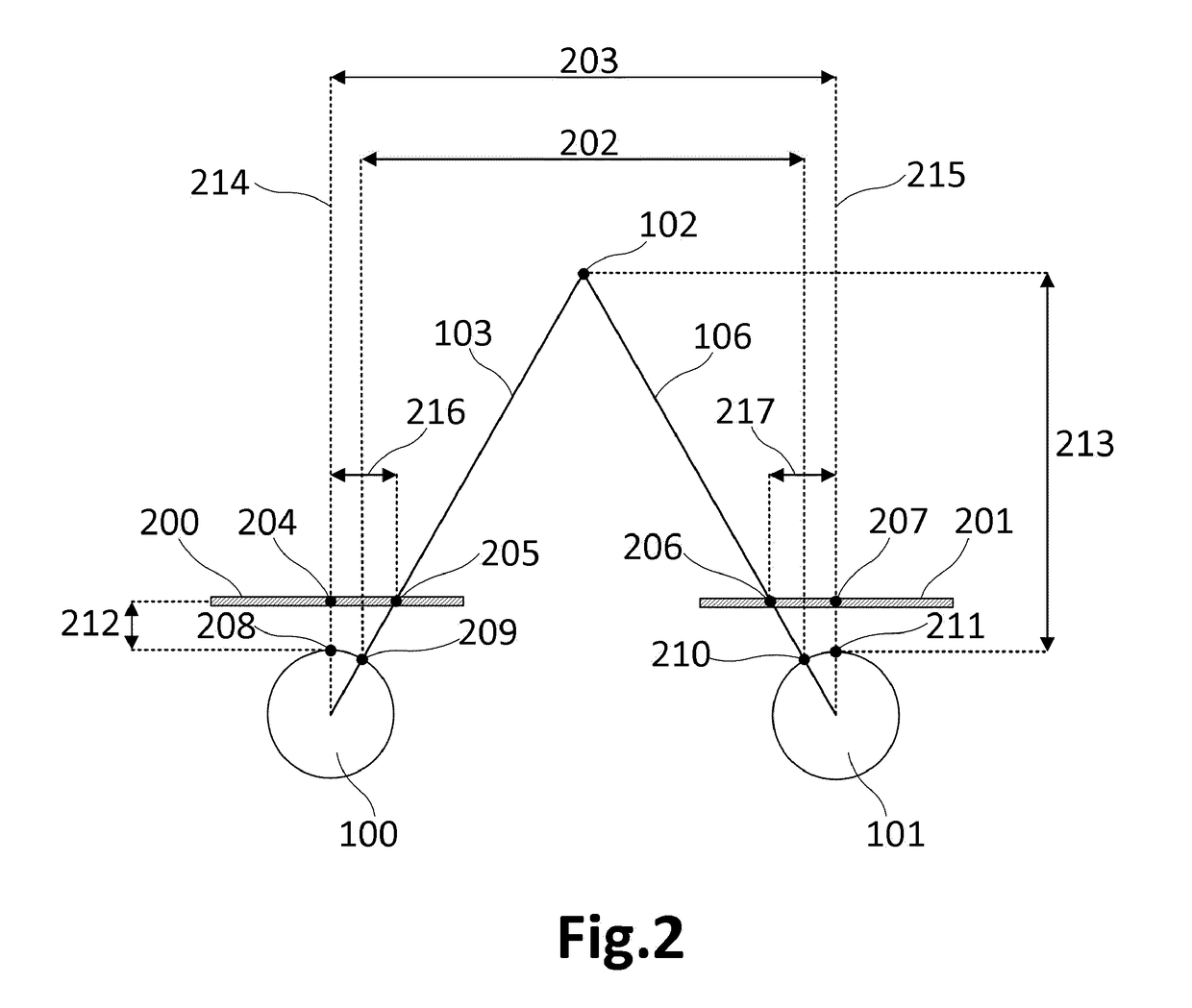Progressive ophthalmic lenses
a technology of progressive lenses and ophthalmology, applied in optics, medical science, instruments, etc., can solve the problems of many users' difficulties in adapting to progressive lenses, limitation of ocular convergence, etc., and achieve the effect of improving user adaptation
- Summary
- Abstract
- Description
- Claims
- Application Information
AI Technical Summary
Benefits of technology
Problems solved by technology
Method used
Image
Examples
Embodiment Construction
[0063]Specific details of the invention will be described in the following in order to provide a thorough understanding of the invention. However, a person skilled in the art should understand that the present invention may be practiced without some or all of these specific details. Moreover, certain well-known elements have not been described in detail in order to not unnecessarily complicate the description of the present invention.
[0064]In FIG. 1, a graphical representation of a right eye 101 and a left eye 100 of a person (user / patient) in near fixation is shown. A visual axis 103 for the left eye 100 according to a theoretical (near) fixation point 102 and a visual axis 106 for the right eye 101 according to the same theoretical fixation point 102 are shown.
[0065]Near fixation may be different depending on the user, depending on the value of phoria of the user. The visual axis 103 of the left eye 100 may move temporarily (towards the left temporal bone) or nasally (towards the ...
PUM
 Login to View More
Login to View More Abstract
Description
Claims
Application Information
 Login to View More
Login to View More - R&D
- Intellectual Property
- Life Sciences
- Materials
- Tech Scout
- Unparalleled Data Quality
- Higher Quality Content
- 60% Fewer Hallucinations
Browse by: Latest US Patents, China's latest patents, Technical Efficacy Thesaurus, Application Domain, Technology Topic, Popular Technical Reports.
© 2025 PatSnap. All rights reserved.Legal|Privacy policy|Modern Slavery Act Transparency Statement|Sitemap|About US| Contact US: help@patsnap.com



